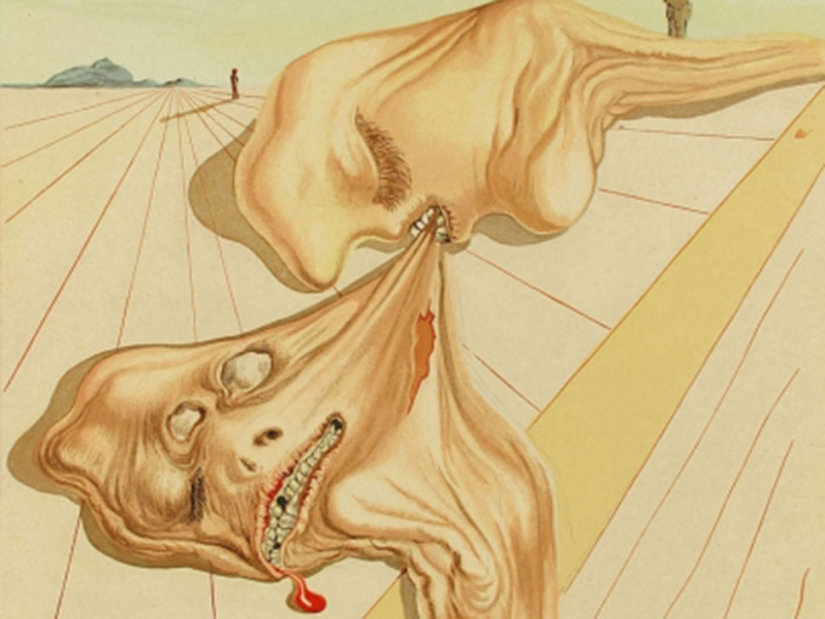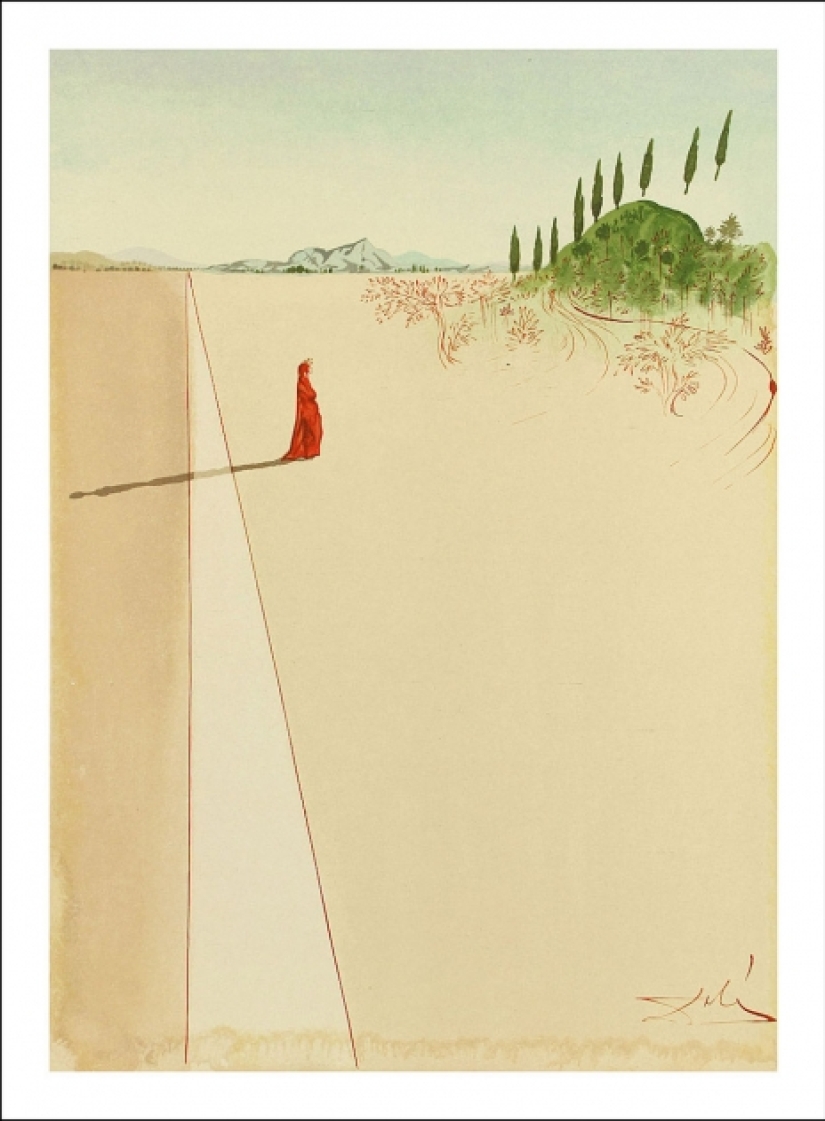How Salvador Dali Descended into Dante's Hell
The famous "Divine Comedy" by Dante Alighieri begins with the fact that the poet, having passed his earthly life halfway, found himself in a gloomy forest, having strayed from a straight path. The poem begins, frankly, not very inspiring. It's more like the beginning of some scary story or a bloody detective story. With his work, Dante made a great contribution to the development of poetry and to the understanding of human nature, but his main achievement was the image of hell he created, which influenced the concept of hell in human consciousness.
There are nine circles in Dante's hell, and in each of them there are increasingly sophisticated and cruel tortures and punishments, fire, ice, mythical creatures and terrible demons. The Divine Comedy is an allegory about sin and redemption. Virgil, another poet who also touched on the theme of hell in his work, becomes Dante's guide in hell. Of course, Salvador Dali, a zealous Catholic, could not pass by such a topic. The fact that the poem was previously illustrated by William Blake and Gustave Doret only added to the theme's appeal.
(34 photos in total)


In 1957, the Italian authorities asked Salvador Dali to create a series of 101 watercolors for a new edition of the Divine Comedy, dedicated to the 700th anniversary of the birth of Dante Alighieri and scheduled for 1965. Dali set to work. But when the first of Dali's watercolors were exhibited at the Pallavicini-Rospigliosi Palace in Rome, part of the Italian public was dissatisfied with the fact that a Spaniard, not an Italian, was hired to pay tribute to the memory of the greatest poet of their country. The project was quickly curtailed.
But Dali was not confused by this, and he finished working on the illustrations. In 1964, he turned to his French publisher Joseph Faure, who was then working on the release of a volume of Dali's illustrations for a new edition of Don Quixote. The artist proposed to make a new edition of Dante Alighieri's poem with his illustrations. Faure showed a selection of Dali's watercolors to the publishing house Les Heures Claires, which was enthusiastic about the project.
Two engravers — Raymond Jacquet and his assistant by the name of Tarikko — were given the task of manually carving 3,500 wooden blocks necessary for the reproduction of Dali's watercolors. A limited edition of the book has been published in Italian. Reprints of Dali's watercolor illustrations for The Divine Comedy can be purchased online.
The illustrations show the details characteristic of Dali — elongated limbs, sprawling faces and an anxious mood. Although his illustrations cannot be compared to the works of Dore and Blake, Dali's works create a surreal interpretation of hell and all its punishments.
Keywords: Illustrations | Poetry | Poet | Salvador dali | Surrealism | Surrealists | Artist
